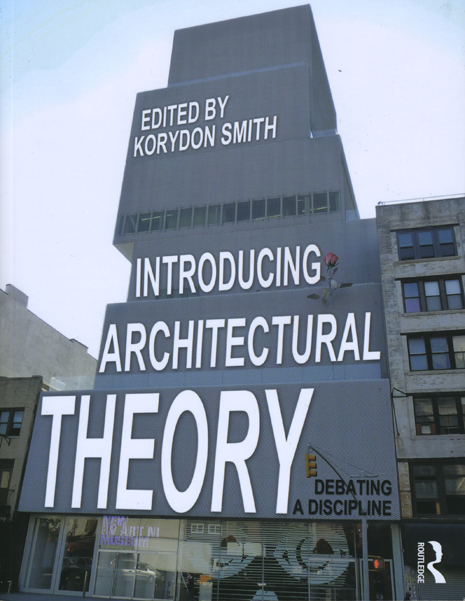
FAYETTEVILLE, Ark. – Introducing Architectural Theory by Korydon Smith, a professor of architecture in the Fay Jones School of Architecture at the University of Arkansas, offers a guide to the complexities of architectural theory and thinking critically. While designed as a textbook, Introducing Architectural Theory can be read by anyone interested in the historical development of ideas about architecture.
“We were interested in creating a course that would affect the students’ long-term thinking about architecture. We wanted the course, foremost, to provide students with strategies for critical thinking,” Smith said. “Architectural theory would simply be the medium. We aspired for students to not only understand the origins and trajectories of various architectural theories but also to verbalize and re-conceptualize their own predilections of architecture.”
Each chapter includes three different views on a topic: an original text, a philosophical text and a reflective text.
For example, the first section of the book deals with the construction of buildings, known as tectonics. Smith starts the section by looking at the debate between simplicity and complexity. The original text is Marcel Breuer’s “Where Do We Stand?” in which he discusses the architecture of the Modernist movement. He emphasizes his belief and the belief of many of his contemporaries that architecture should focus on the structural principles and practical uses of buildings. The reflective text, a portion of Robert Venturi’s “Complexity and Contradiction in Architecture,” contradicts Breuer’s stance. Venturi says that complexity, ambiguity and even contradiction are key elements of architecture. “On Simplicity” by Vittorio Gregotti is the philosophical text. Gregotti insists that that designing a “simple” building is anything but simple, and that a building is not simple because its parts are inherently geometrically basic but because all of those parts display their necessity.
The discussions on tectonics further cover the debates on ornamentation, honesty versus deception and material versus immaterial.
“Organizing the book in this fashion positions the reader to make up his or her mind on which author they agree with the most. It also allows students to explore other options,” Smith said. “I’m often asking students ‘What’s missing here?’ They are given three positions but is there a fourth or fifth option?”
The other sections of the book present reading materials pertinent to various elements of architecture, including function and form, proportion and organization, context, and the role of nature in architecture. The texts in each chapter span the timeline of history, containing works from 25 B.C.E. to the current era, which shows how theories have changed or not over the past two millennia.
Introducing Architectural Theory: Debating a Discipline, was published in 2012 by Routledge Press.
Contacts
Korydon Smith, associate professor, architecture
Fay Jones School of Architecture
479-575-2874, kdhsmith@uark.edu
William T. Bryan, intern
University of Arkansas
479-575-5555, wxb004@uark.edu